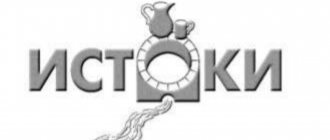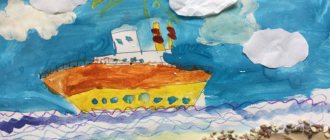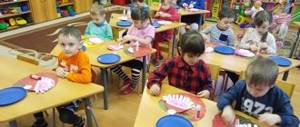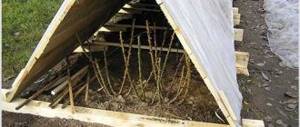Game technologies in teaching children traffic rules
Natalia Koshelnikova
Game technologies in teaching children traffic rules
GAME TECHNOLOGIES IN TEACHING CHILDREN TRAFFIC RULES.
Introduction.
The problem of ensuring safe human behavior in road traffic arose simultaneously with the advent of the first car and became aggravated in the process of intensive motorization. High speed of movement , density of traffic flows on the streets and roads of our country are rapidly increasing, and will progress in the future. Ensuring safety, preserving the life and health of road users is a task of national importance. Considering that road much earlier than school students, it is necessary purposefully organize the work of educational institutions to prepare children for safe behavior on the roads , starting from preschool age.
For us, adults, the most valuable thing is the health and life of the child . It is very important that compliance with rules becomes the norm and way of life for children and adults . Therefore, it is advisable to begin studying the Rules of the Road as early as preschool age. It is known that habits established in childhood remain for life, therefore one of the important problems in ensuring road is the prevention of child road traffic injuries among preschool children, the formation of a culture of public behavior in the process of communication with the road .
The formation and development in children of skills and habits of safe behavior in the surrounding road transport environment is a rather complex and lengthy educational process that requires special exercises and the use of a number of didactic methods and techniques.
In improving and consolidating knowledge, a special role is given to the organization of children's play activities , in which the spatial orientation of preschool children and their ability to apply this knowledge in practice are formed. When working with children, a large role should be given to didactic and outdoor games , as well as creative games that develop spatial orientation.
Play is one of the most important activities of a child, his self-expression, and a way to improve himself. During the game, attention, memory, imagination are developed, skills and habits are developed, and social experience is acquired. The game is not only entertainment. It makes leisure time meaningful, teaches creativity, the ability to navigate difficult situations, and speed of reactions.
“Without play there is not and cannot be full-fledged mental development. A game is a huge bright window through which a life-giving stream of ideas and concepts of the surrounding world flows into the child’s spiritual world. A game is a spark that ignites the flame of inquisitiveness and curiosity” (V. A. Sukhomlinsky)
Game as an activity reflects a practical approach to mastering theoretical knowledge, as well as skills and abilities. specific skills and behaviors in real traffic during game . The game is a recreation of social relationships between people, their behavior and decision-making in a simulation of real situations and social life. The variety of forms and types of activities mastered by a child determines the variety of his games. The game is educational and developmental in nature, therefore it is widely used in the educational process. Play is the main activity of a preschooler, during which he exercises his strength, expands his orientation, and acquires social experience.
The first is a “story-based role-playing game”
Role-playing game is a form of modeling by a child, primarily of social relationships and free improvisation, not subject to strict rules or unchangeable conditions.
A distinctive feature of a role-playing game is the presence of a plot and roles. These are games of “something”
,
“into someone”
, they are
a “mirror of society”
.
When acting out various situations, children act as the people whose roles they perform should act. During role-playing games, children's knowledge of traffic rules .
Role-playing games allow you to simulate typical road conditions and realize the possibility of a child’s varied participation in the game. At the same time, it is important to bring the game conditions as close as possible to real road reality . All this contributes to the development of cognitive processes focused on the culture of behavior of children in public places.
the children's interest , but the greatest results are achieved with a combination of intellectual and role-playing games. The first require the ability to concentrate, conduct the necessary logical analysis of situations, outline ways to achieve the goal and implement them. And role-playing games allow you to simulate typical road conditions and realize the possibility of a child’s varied participation in the game. At the same time, it is important to bring the game conditions as close as possible to real road reality . All this contributes to the development of cognitive processes focused on the culture of behavior of children in public places.
The second is “ Outdoor game ”
I think you all know what kind of games these are. Do you remember what traffic games you played as a child? ( "Arrow, arrow, circle"
,
“Traffic Light”
,
“To your signs!”
,
"Auto Racing"
,
"Red, Yellow, Green!"
,
"The quieter you go, the further you'll get!"
,
“Walk quickly, watch, don’t yawn!”
.)
The third is “Games by the rules ”
“Board and printed game: These are educational games according to the rules of “ Road Lotto ”
,
“Live the street”
,
“
Roads of our city ” ,
“Trip around the city”
, etc.
The next game according to the rules is “Didactic Game”
One of the effective means of educating the mind. They develop children's ; they require the ability to decipher, unravel, and unravel. "Place the pictures in order"
,
“Fold the picture”
,
“Find the odd one out”
,
“What a driver needs”
,
“Good and bad deeds”
, etc.
Over two years of working with children, starting from the middle group, the concept of “sidewalk”
and
“roadway”
, children got acquainted with the places where
cars and people move , practiced the skills of walking on the sidewalk, sticking to the right side . What was new for them was the conversation about the pedestrian crossing and its purpose. Children had to learn to find it in illustrations in books and on models. The work was carried out systematically both with a group of children and with subgroups, taking into account the individual characteristics of children in a particular group .
Teaching preschoolers the culture of street behavior is closely related to the development of children's spatial orientation. Both in the middle group and then in the senior group, during practical classes, the skills of crossing the roadway were regularly practiced. The easiest way to do this is in the game. In a group or on the playground , the roadway, sidewalks and pedestrian crossing were marked. Each child, approaching a pedestrian crossing, stopped at some distance from it, carefully examined the roadway, turning his head to the left and then to the right , making sure that there was no traffic, went out to the pedestrian crossing, when moving to the middle of the road he controlled the situation on the left, and with the middle of the road is on the right . All the children’s were brought to the point of automaticity; correct behavior at a pedestrian crossing becomes a habit.
For the children in the middle group, the conversation about the pedestrian crossing and its purpose, right-hand traffic on the sidewalk and roadway was new. In addition, children 4-5 years old should clearly understand that when the traffic light turns green for pedestrians and allows them to move , for drivers at that time the red traffic light turns on - prohibiting. When the green signal lights up for drivers and allows cars to move , the red signal flashes for pedestrians. In the road safety corner there are :
1. Layout of a traffic light with switching signals, powered by a battery.
2. Didactic games “Find your color”
,
“Assemble a traffic light”
3. A pedestrian crossing must be marked on the street model.
In the older group, the guys learned a lot about road traffic . It is at this age that one gets acquainted with such large and complex topics as “Crossroads”
,
"
Road signs " .
Consequently, in the road safety corner the following appeared :
4. A mock-up of an intersection, with the help of which children will be able to solve complex logical problems on road and practice the skills of safely crossing the roadway at an intersection. It is desirable that this model has removable objects, then the children themselves will be able to model the street.
5. Also, there is a set of road signs , which includes such road signs as : information and directional signs - “Pedestrian crossing”
,
“Underground pedestrian crossing”
(or)
trolleybus
stop warning signs – “Children”
;
prohibitory signs - “
Pedestrian traffic is prohibited ” ,
“
Bicycle traffic ;
mandatory signs – “Pedestrian
path ” ,
“Bicycle
path ” ;
priority signs - “Main
road ” ,
“Give
way ” ;
service signs – “Hospital”
,
“Telephone”
,
“Food station”
. There are small signs on stands for working with the layout, and larger signs on stands for creative, role-playing games.
6. Didactic games: “What do the signs say?”
,
“Guess the sign”
,
“Where is the sign hidden?”
,
“Crossroads”
,
“Our Street”
7. In addition, the children of the older group got acquainted with the work of a traffic controller. In the corner of the road safety center there appeared diagrams of the traffic controller’s gestures, a didactic game “What does the rod say?”
,attributes of a traffic police inspector: baton, cap.
The knowledge conveyed to children was constantly becoming more complex, refined and supplemented. The children were told about the work of police traffic controllers who keep order at intersections where there are no traffic lights. They serve with a wand (a stick painted with black and white stripes)
commands, who should stand, who should walk or go.
In the evening, a light bulb inside the wand lights up, and it is clearly visible. The traffic controller raises right hand with the baton up - this corresponds to a yellow traffic light.
The traffic controller stands with his face or back - this corresponds to a red signal. If you turn sideways, you can walk as if at a green traffic light. We introduced children to the rules of behavior in transport. They explained that you need to enter a bus, tram, or trolleybus through the back door and exit through the front; small children and elderly people can also enter through the front door; Small children without parents should not ride in public transport. You need to talk quietly so as not to disturb others. You cannot stand at the doors - this interferes with the entry and exit of passengers. You cannot lean out or put your hands out of open windows. It is customary to give up your seat to elderly people, passengers with small children, and people with disabilities.
We also had a conversation with the children about where they went with their parents, what type of transport they used, how they behaved, and why they couldn’t travel without adults. You can organize a game “Ride on the Bus”. (trolleybus, tram) using chairs, pillows, and modules.
and played out various situations, distributing roles: the driver drives the bus, announces stops; the controller checks the tickets; passengers stand at the bus stop, enter and leave the cabin with children (dolls), address each other politely (“Are you getting off at the next stop?”, “May I pass,” give way to small children and elderly people
In conclusion, I would like to say that great attention has always been paid road Road safety promotion road safety issues , clarify legislation, legal norms regulating the behavior of road . To protect your child from danger, you need to start preparing him for meeting the street as early as possible, familiarizing him with the Rules of the Road and road signs . He should be taught how to navigate in space, and develop the skills to behave on the street and in transport. This will reduce the likelihood of road accidents . In this case, the game, simulating real situations and actions, acts as a powerful learning that allows one to avoid the negative influence of the environment in practice. Illustrative, not always correct, real-life examples of “this is what adults do”
must be critically rethought by students using
game forms of learning . The game should prompt the child to make an independent decision in a real situation. The loser in the game is the one who chose the “that’s what adults do”
.
Whoever teaches children traffic rules , be it parents or preschool teachers, it is important to remember that the corresponding behavior of adults has the greatest influence on the formation of a child’s behavior on the street. After all, it’s not enough to just read, tell, teach a child, you need to show him by example how to behave correctly on the street . Otherwise, any targeted training loses its meaning .
Knowledge of traffic rules should become the main guideline for modern children After all, the lives of the younger generation depend on them. The sooner kids learn these rules , the calmer their parents and educators will be.
Game technologies in teaching preschoolers traffic rules
- January 15, 2013
Competition “My Pedagogical Initiative - 2012”
Nomination “Methodological work in preschool educational institutions”
This work experience is addressed to teachers working with children of senior preschool age in teaching traffic rules. The work presents various forms of play activities that will help the teacher organize children's activities in an interesting and entertaining way.
In our country, the situation with children's road traffic injuries has been and remains very alarming. Traffic accident statistics show that children often find themselves in emergency situations. Many road accidents are most often caused by children themselves. This is caused by ignorance of the basic principles of traffic rules and the indifferent attitude of adults.
How well a child has learned the rules of safe behavior and how he applies them in a real situation on the road network depends on his health. For us, adults, the most valuable thing is the health and life of the child. It is very important that compliance with safety rules becomes the norm and way of life for children and adults.
Of particular importance in solving this problem is the early and correct preparation of the youngest pedestrians, who are already facing serious difficulties and dangers. Therefore, it is advisable to begin studying the Rules of the Road as early as preschool age.
It is known that habits established in childhood remain for life, therefore one of the important problems in ensuring road safety is the prevention of child road traffic injuries.
The relevance and practical significance of training and education and, in general, the prevention of child road traffic injuries is emphasized by high statistical indicators.
In preschool age, play is the main activity. The child wants to play, he plays and learns about the world around him. The game gives the child the opportunity to express himself. While playing, he not only learns, but also consolidates the acquired skills and abilities, which contributes to the formation of positive habits.
A significant place in the education of older preschoolers is given to gaming technologies, which make it possible to organize various types of children's activities and maintain the constant interest of preschoolers in learning the Rules of the Road. By teaching through play, we teach children not in the way that it is convenient for us, adults, to give educational material, but in the way that it is convenient and natural for children to take it.
Based on the psychological characteristics of preschoolers, in order to maintain interest and high-quality assimilation of program material, the puppet character Avtosha and his friend Flasher are introduced in the classroom.
When teaching children road safety rules, a wide variety of games can be used:
- with elements of physical exercise and sports;
- role-playing and situational games;
- theatrical and dramatization games;
- didactic;
- using layouts;
- computer;
- intellectual and cognitive.
The value of many games lies in the fact that you can make them with your own hands together with children from different materials, and also come up with different options for games.
At the beginning of the year, a model is made (a sheet of thick cardboard, an appliqué of a children's car park is made, a roadway, sidewalks, playgrounds are planned, road marking lines are drawn). Children work with this model throughout the year: they place road signs, simulate traffic situations and resolve them themselves. They perform various tasks: help a pedestrian cross an intersection, find violators, guide pedestrian figures along a safe route, etc.
Role-playing is a form of modeling by a child, primarily of social relationships, and free improvisation, not subject to strict rules or unchangeable conditions.
In situational and role-playing games, children play out a wide variety of problem situations (“Pedestrians and drivers”, “We are passengers”, “Controlled intersection”, etc.), in which they can demonstrate practical skills and abilities. Children come up with a plot, assign roles (calling an ambulance, a traffic police officer, an interview with a journalist, a survey by an inspector, then the host of the “Main Road” program reports on the incident and gives road safety advice).
To consolidate the material covered, for example, “Road Signs”, teams participate in relay races with overcoming obstacles (running, jumping into hoops, jumping over, stepping over objects, throwing balls), perform various tasks: who can assemble a road sign faster, who can name more road signs signs and others.
Children enjoy playing finger theater “Let's get to know each other” and talk about road signs in a certain sequence: what is the name of the road sign, how to recognize it (geometric shape, color, symbol), its purpose. Such games contribute to the development of speech, motor skills, and emotional perception.
Didactic games require the ability to decipher, unravel, and solve. Therefore, a special place is given to the games: “Match the symbol to the road sign”, “Assemble the road sign” (cut pictures are pasted on the edges of the cubes); such games where you need to assemble one whole from small parts (transport, traffic lights, road signs); for classification: “Distribute the signs into groups”, “Road Knot” (a manual made of cardboard with slots), in which children collect road signs, these can be certain groups of signs, signs for a pedestrian, getting to know a new sign and others.
Computer games develop quick thinking and help consolidate the material covered: “Coloring of road signs”, “Quiz”. They are presented to children in an interesting, playful way, with the participation of cartoon characters. Children not only have fun, but also learn.
Children can express themselves and show what they have learned in intellectual and educational games and game programs. The selection of games is united by one plot, theme (travel games, entertaining quizzes, etc.): “Safe Walk”, “Traveling on the New Year’s Express”, “The Smartest on the Road”, “Road Safety Stars”, “I Know the Road Signs”.
I tried to show how, with the help of gaming technologies, you can teach preschoolers the Rules of the Road in an interesting, entertaining and exciting way.
Used Books:
- Prevention of children's road traffic injuries / comp. V.N. Kiryanova. M.: Publishing House Third Rome, 2007. 56 p.
- Selevko G.V. Modern educational technologies. M.: “Public Education”, 1998. 256 p.
- Elkonin L.B. Psychology of the game. 2nd ed. M.: Foggy. Ed. Vlados center, 1999.
- Yakovlev V.F. Comments on the Traffic Rules of the Russian Federation / V.F. Yakovlev. M.: Third Rome Publishing House, 2008. 192 p.
Appendix 1. Presentation.
Appendix 2. Lesson notes.
Author: Olga Efimovna Prudnikova, additional education teacher of the highest qualification category, MBOU "City Center for Children's (Youth) Technical Creativity" of the city of Kemerovo, teaching experience 39 years, winner and laureate of all-Russian, regional, municipal competitions.






